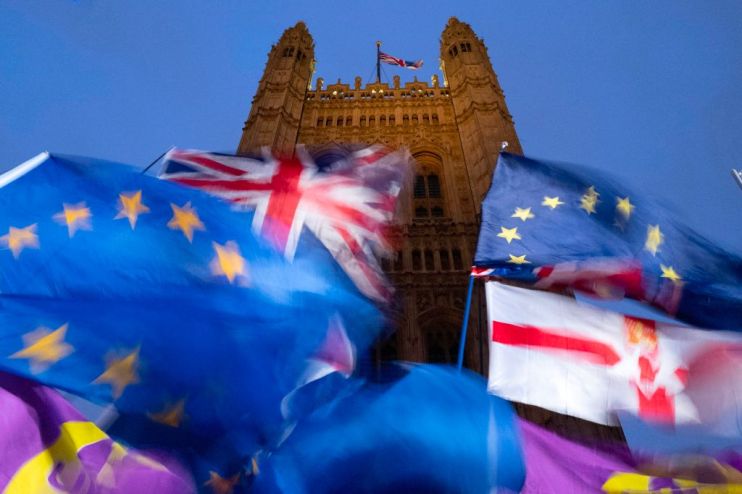What’s in the WAB? Government’s Brexit bill explained

Today MPs will begin debating the government’s Withdrawal Agreement Bill – covering everything from the £39bn divorce settlement to EU citizens and setting out the path for the UK’s future relationship with the EU. But what is in it – and will it pass?
What is the WAB?
Brexit brings out the best (or worst) of acronyms. After much chat about MV4 and MV5 (meaningful votes – neither of which technically happened) we now turn our gaze to the WAB. The Withdrawal Agreement Bill is the 110-page piece of legislation that the government is bringing forward for rapid debate, in hope everything will be ratified in time to meet Boris Johnson’s Halloween Brexit deadline.
How long will MPs debate it?
Leader of the House Jacob Rees-Mogg set out the timetable yesterday. The process was kicked off last night with publication of the bill. Today MPs will debate it and take the first vote – this is known as the second reading. The remaining stages of the bill will be heard in just three days, with the aim of getting it to the Lords by Friday.
MPs will begin debating the Brexit deal bill at 12.30 p.m and the first vote is expected at 7 p.m.
That doesn’t sound very long
It’s not – and indeed it includes a clause that actually cuts back the usual amount of time required to discuss laws relating to treaties from 21 days to just one.
Government is spinning the fact that the Benn Act was debated and passed rapidly – but the law was deliberately drafted to be short and simple in order to secure its passage. The WAB is more complex, as you would expect from a piece of legislation this significant.
The programme motion which the government will be putting forward to ensure parliament sticks to its timetable is likely to receive fairly strong push back, and could be yet another defeat for Johnson. You can read the full story here.
What does it say about transition?
The WAB says that the UK will still be under EU law during the transition, which currently runs until December 2020. Critically the WAB also sets out that only the government can propose an extension to this – even if no trade deal has been struck in time.
What does that mean for a no deal?
Opposition MPs including Labour’s Hilary Benn are concerned this could pave the way for a no deal Brexit. It is expected that some parliamentarians could seek to amend this “trapdoor” clause. However pro-Brexit MPs, like the Conservative faction known as the Spartans, are probably happy as it means MPs can’t seek constant extensions.
What about the divorce payment?
The WAB allows ministers to start paying the £39bn settlement, and sets out how that will continue over coming years.
What about the future relationship?
Parliament will have a role in shaping the future relationship talks – including a vote on a final future relationship deal. This appears to be a concession to Labour MPs Gareth Snell and Lisa Nandy, as well as former chancellor Philip Hammond who raised the matter during not-so-Super Saturday.
Anymore meaningful votes?
MV5 now seems unlikely as Section 13 of the Withdrawal Act is repealed within the WAB, meaning there is no need for a “meaningful vote” on the Brexit deal separate to and independent of votes on this bill itself. That’s one less hurdle for the government to jump through.
So will it get through?
Sources have told City AM the government is reasonably confident the second vote could get through, although it’s going to be tight – just a handful of votes will swing it either way.
If Johnson is defeated at that point it will be curtains for the whole deal, as the same legislation can’t be brought forward twice (as the speaker John Bercow detailed yesterday).
If it goes through, he then faces the programme motion vote – which he is far more likely to be defeated on. That means that while MPs back the deal in principle, they won’t be held to Johnson’s Halloween deadline.
What does that mean for Brexit?
Leaving the EU on 31 October now seems unlikely – but the UK could still be out by the end of the year. The next few hours – and days – are critical.
Main image: Getty